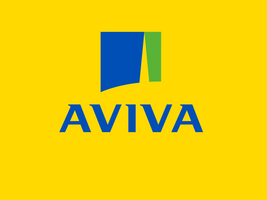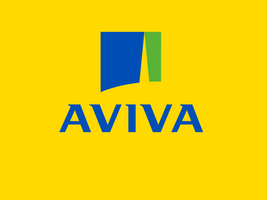Title Page
-
Conducted on
-
Prepared by
-
Location
-
To view our Loss Prevention Standard that supports this checklist, please view the following link : https://broker.aviva.co.uk/documents/view/aviva_temporary_shutdown_mothballing_construction_sites_lps.pdf
Temporary Shutdown and Mothballing of Construction Sites
Planning to Shutdown/Mothball
-
1. Have you notified your insurer and insurance broker that the site will cease operations for an extended period?
-
2. Have you updated your Project/Site risk assessment to reflect that the site is beiing shutdown or mothballed?
-
3. Has the Project/Site Emergency Response Plan been updated?
-
4. Has a Project Recommencement Plan been prepared?
-
5. Are reviews/updates of the Project Risk Register being completed as required?
Security Aspects
-
6. Will the project/site remain securely enclosed by an adequate and robust security fence throughout the period of shutdown/mothballing?
-
7. Are you providing remotely monitored CCTV systems covering the site perimeter and any critical/vulnerable internal areas that are connected to an approved 24hr manned remote monitoring facility/Alarm Receiving Centre?
-
7.1 Do CCTV systems feature PIR movement sensors supported by a "voice challenge" facility provided from the CCTV control room.
General Housekeeping & Storage
-
8. Are areas used for materials/equipment storage away from areas of the site that are at risk from flooding?
-
9. Have you been able to raise/elevate equipment and materials off the ground?
-
10. Have you removed all waste materials from site?
-
11. Have you minimised storage within all buildings wherever possible, especially combustible materials?
-
12. Have fuel oils and gas cylinders been either removed from site or otherwise stored in an appropriate secure and external area?
-
13. Have you been able to isolate all non-essential utilities and services?
-
14. Will intruder alarms and any automatic fire alarm systems remain operational and connected to a 24 hr manned approved Alarm Receiving Centre?
Construction Plant and Machinery
-
15. Has construction plant/equipment been either removed from site or been parked or stored in a secure compound outside of a flood risk zone?
-
16. Have you removed from site any keys or batteries from large items of construction plant to prevent them from being stolen?
-
17. Where cranes are left on site, have you ensured that jibs on mobile cranes have been lowered and that any tower cranes have been left so that they ‘free slew’?
-
18. Are arrangements in place for the continuation of any required equipment maintenance or statutory inspections?
Installed Electrical and Mechanical Equipment
-
19. Have any electro-mechanical installations been shutdown and/or de-energised in accordance with manufacturers instructions and recommendations?
-
19.1. Are plant rooms competely sterile of combustible materials and secured?
-
19.2. Will any fixed fire protection of any electro-mechanical installations remain operational?
-
Please arrange for the installation to be shutdown/de-energised as per manufacturers instructions.
-
19.3. Are arrangements in place for any necessary/required inspection/maintenance of any installed electrical and mechnical equipment (includes Statutory Inspections)?
-
Statement: Please arrange for the installation to be shutdown/de-energised as per manufacturers instructions.
-
19.4. Are any required supplies of fuels/utility guaranteed?
-
Statement: Please arrange for the installation to be shutdown/de-energised as per manufacturers instructions.
-
19.5. Are plant rooms competely sterile of combustible materials and secured?
-
20. Have you ensured any electro-mechanical equipment that is on site but not installed/commissioned is stored and preserved in accordance manufacturer’s recommendations and where possible covered in a flame resistive temporary covering materials (e.g. materials meeting LPS1207 or equivalent).
Preventing Water Damage
-
21. Are the premises water tight?
-
21.1. Are there benefits in using flame resisting temporary covering materials to prevent water damage to vulnerable areas, installed equipment or areas of high value? (e.g.using materials meeting LPS1207 or equivalent)
-
22. Have you isolated and drained down water systems and supplies?
-
22.1. Are you able to provide remotely monitored leak detection equipment?
-
22.2. Are the locations of water shut off valves/stopcocks clearly displayed on a plan of the site that is provided at the main site entrance?
Earthworks Excavations & Storage
-
23. Are plant rooms competely sterile of combustible materials and secured?
-
24. Have large sections of exposed earthworks been adequately covered or protected from the elements wherever possible?
-
25. Are all temporary and permanent drainage runs clear and flow freely, including discharge points, oil, silt and settlement traps, etc?
-
26. Are arrangements in place to complete regular inspection and maintenance of pumps and dewatering systems?
-
27. Where continued operation of pumping systems is critical, have remotely monitored alarms on pump operation been installed been installed?
Temporary Works
-
28. Have structural reviews and risk assessments been completed for all temporary works?
-
29. Are arrangements in place to conduct regular inspections and maintenance of temporary works during extended shutdown periods?
Structural Design
-
30 Have assessments been made of the effects of wind loadings on structural integrity, including the use of any temporary covering materials?
-
31 Are arrangments in place to review and re-assess the continued structural integrity of structures at appropriate intervals during extended periods of shutdown/mothballing?
Completion
-
Overall Comments
-
Completed by: (Name and Signature)















